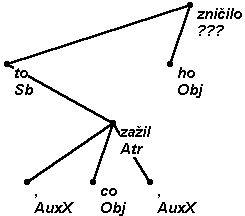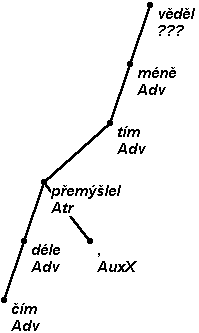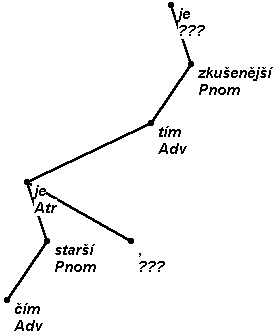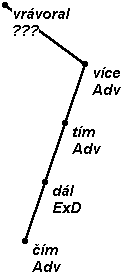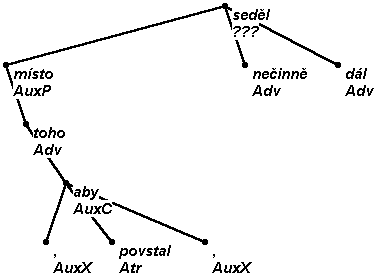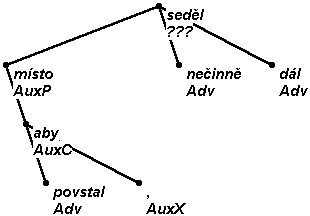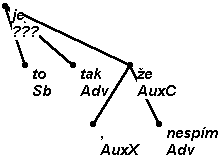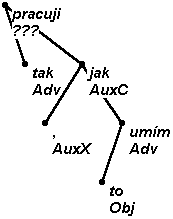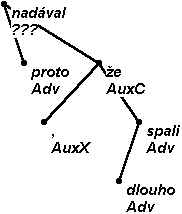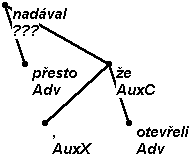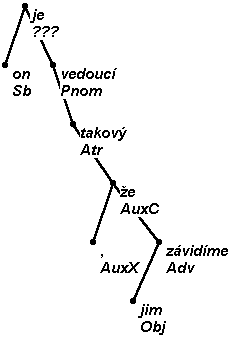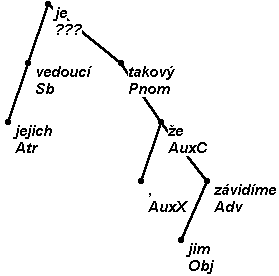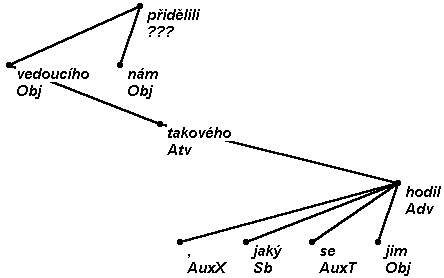The referring pronoun to (that, it) at the beginning of an embedded clause is assigned the respective function it subsumes in the governing clause, the embedded clause gets afun Atr and it is suspended on to, without regard to the "direction" (forward - to an embedded clause, or backward - to a person/event) of the coreference. The embedded clause may be introduced by a conjunction (že that, aby in order to, zda whether) or it may be a relative clause.
Cases with an infinitive in place of an embedded clause are treated in a similar way.
With some prepositions, the pronoun to (that should follow them) is deleted and an embedded clause follows immediately. This clause is suspended under the preposition and takes over the afun that would be assigned to to.
If only some of the members of the embedded clause remain(s) after deletion of the rest, it is assigned afun ExD (to indicate that the predicate is missing). It is, however, necessary to distinguish between cases of deletion (in which an element is left behind) as in examples (1) and (2) below, and those of prepositional cases: in (3) the form (the Instrument case) of the word pivo (beer) is determined by the preposition místo (instead of), the whole construction is an Adv and there is no referring to missing.
An embedded clause may be introduced by such expressions as tak (so), (do)tehdy (until), tolik (so much), poté/mezitím/zatím, co/když/jak (after/in between/still when/what/how), odtud,kam/odkud/kde (from where, where), proto/přesto, že (because/though that). Bothe the referring word and the embedded clauses are suspended side by side and are assigned afun Adv.
If the word takový (such) is placed immediately before an embedded clause, it is assigned the respective function it would have within the main clause (Pnom, Atr, Atv) and the embedded clause is suspended on this word with afun Adv.
Note
If the word takový is not immediately followed by a comma, it itself is an Atr and the embedded clause is either an Atr depending on the noun modified by takový, or it has its usual function determined by the verb (of the main clause) on which it is suspended.

